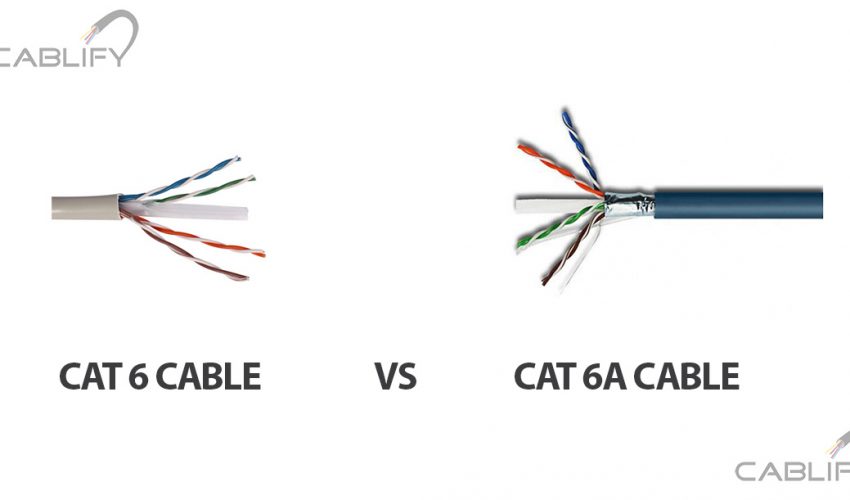We often are asked by a number of business owners and IT stakeholders if they should use Cat6 or Cat6a for new data cabling installations or upgrades. We feel there is a lot of confusion amongst users and we need to clear some myths regarding the optimal use of these data cables.
Cat6 vs Cat6a Cables
Both Cat6 and Cat6a cables are advanced types of Ethernet cables designed to support high-speed data transmission. Here’s a closer look at their specific characteristics:
Cat6 Cables
- Bandwidth: Cat6 cables are designed to support up to 10 Gbps over shorter distances, specifically up to 55 meters.
- Frequency: These cables operate at a frequency of 250 MHz.
- Crosstalk: Cat6 cables provide good protection against crosstalk, but they are less effective compared to Cat6a.
- Installation: Cat6 cables are thinner and more flexible, making them easier to install in tight spaces and conduit.
- Cost: Generally, Cat6 cables are more affordable, making them a cost-effective solution for many businesses.
Cat6a Cables
- Bandwidth: Cat6a cables can also support 10 Gbps but over a longer distance of up to 90 meters.
- Frequency: These cables operate at a higher frequency of 500 MHz, which provides better performance.
- Crosstalk: Cat6a cables have superior shielding and tighter twists, significantly reducing crosstalk and providing better resistance to electromagnetic interference (EMI).
- Installation: Due to their thicker and more rigid structure, Cat6a cables are more challenging to install. They require more space and careful handling.
- Cost: Cat6a cables are more expensive, often costing nearly twice as much as Cat6 cables.
First of all both Cat6 and Cat6A are 10 Gbps bandwidth. However, there is a limitation on the distance for both the cables. While Cat6A can carry 10 Gbps of data up to a distance of 90 m, Cat 6 or Category 6 Cable can carry 10 Gbps data up to a length of 30 to 55 m. For Cat 6A to carry 10 Gbps, the cabling has to be literally perfect without any major bends or kinks.
Cat6A is better immune to crosstalk due to the tighter winding of the cable between themselves. Cat6 A is much thicker than Cat6 Cable and therefore is relatively harder to install and their price can be double that of cat six cables. As per our recommendation, if you’re cables for new installations are not over 150 feet, you can easily go with Cat 6 cable as it will suffice your requirement for 10 Gb network.
Category 6 A cable operates at 500 MHz which is twice the frequency of 250 MHz operated by Cat 6 cable. It is important to mention that category 6 cables are capable of achieving 10 GB per second speed at a shorter distance of up to 50 m. Category 6A cables are an enhanced version of Cat 6 cables as they have better shielding and protection against the alien crosstalk.
Here is the summary:
- Cat6 Cables are capable of 10 GB output but for shorter distances.
- If your cable runs are with 50 feet and you need 10GB output, go with Cat6 cables. If however, your network is susceptible to crosstalk or EMI, go with Cat 6A.
- Cat6A cables are expensive and hard to install. Their price is almost double that Cat6 cables.
- Cat5e: is capable of Gigabit Ethernet up to 100 meters
- Cat6 is capable of Gigabit Ethernet up to 90 meters while 10 Gigabit Ethernet up to 55 meters
- Cat6a is capable of 10 Gigabit Ethernet up to 100 meters




